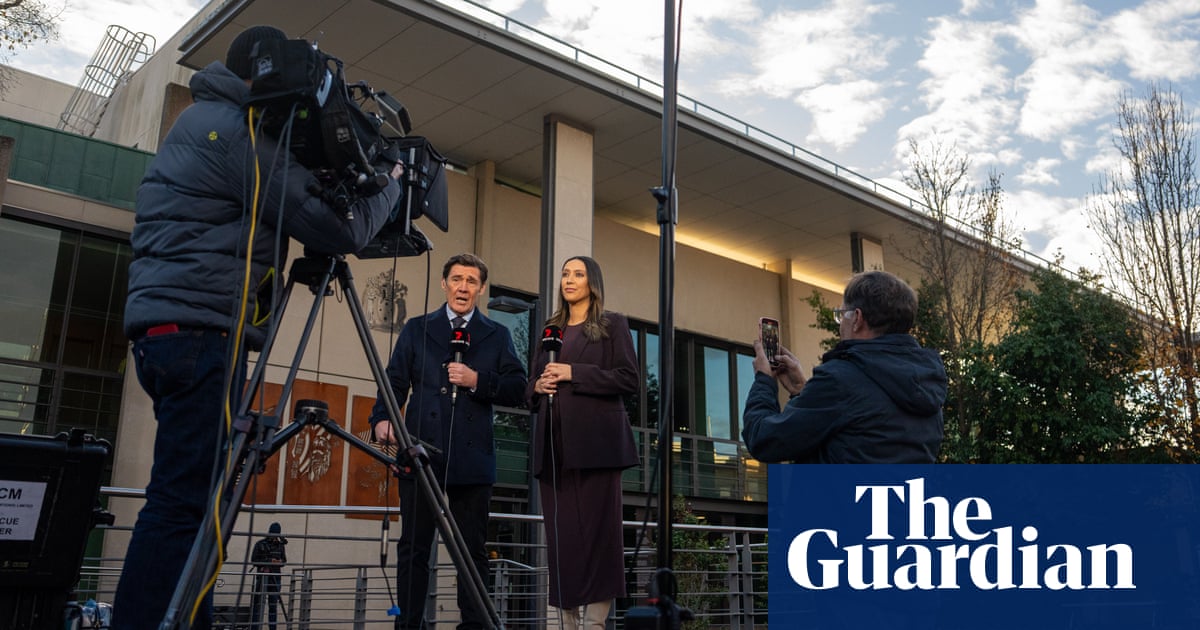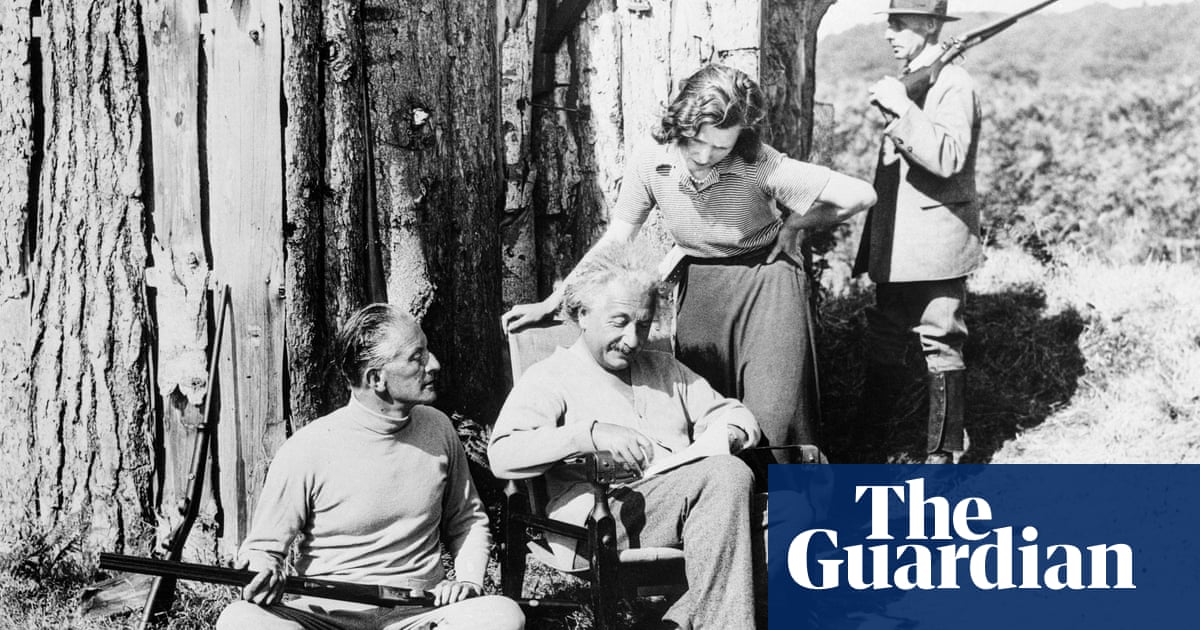The cliche about small talk is that everybody hates it. The misapprehension is that it has to be small. In fact, conversational interactions are objectively good. “The person who starts the conversation is in a better mood afterwards; they tend to feel more connected – and not just to the person they’re talking to,” says Gillian Sandstrom, an associate professor of psychology at the University of Sussex. “We all have a fundamental need to feel connected, valued and seen.” Even if small talk were not socially beneficial, society would demand it nonetheless – we are coming in to wedding season and we are all going to need some moves.
However, we have this perception that there are rules, which haven’t really changed since the 50s: keep things light and relevant, avoid sex, religion and politics, stay on safe territory, such as the weather. But anodyne topics tend to be boring and difficult to segue out of.
Journalists are always good at talking to strangers and distant acquaintances – not because we are nice, as I have just discovered, through the work of Patrick King, the bestselling social interaction coach, but because conversation is infinitely easier when you have a “social purpose”, ie you need something: an opinion, an insight, a nugget of knowledge, 50p. So that is rule one: whatever you ask, imagine that you absolutely need to know the answer.
Tom Bouchier Hayes, a broadcast journalist and a good friend, is famous for his small talk: he once met a guy in the sea and chatted for 40 minutes. He supplies rule two: “If you reveal something expected of yourself, people tend to reciprocate. You can up the ante quite quickly by saying something different.”
Beyond that, there are no rules – it all depends on the situation.
At a wedding
My uncle said once that he preferred funerals to weddings; I thought he was going to say something deep and melancholy about the evanescence of love and the finality of death, but he actually ended: “Just because I know more people.”
Everyone dreads wedding small talk, because it tends to be insipid – on this happy day, of all days, no one wants to talk about things that matter – and the conversational drift is all towards matrimony (“When are you two going to get married?” “Are you married?”). These are dead ends, because no couple will tell you straight off the bat that they are unhappy and there is nothing more boring than a happy couple.

“I don’t tend to like talking to people in couples,” Bouchier Hayes says. “They’re often a bit cagey with what they reveal when their partner is listening. If they have a double act, it’s often a bit thin.” Pick off one half of a couple. Sandstrom says: “Small talk is building a bridge to get somewhere more interesting, so start with the thing you have in common, which will be the location or the event. At a wedding, my instinct is: ‘Bride or groom?’ and: ‘How do you know them?’” Trust that the conversation will pivot from “the groom is my cousin” to somewhere more interesting – “my other cousin is in prison, but that’s not the groom’s brother, he’s from a second aunt who fought in the French resistance”.
“There is some research showing that, when people talk to strangers, they enjoy it more when they go a little deeper,” says Sandstrom. “We have this instinct that we should go bland and stick to the small talk, but that’s not what anybody wants; we all want something more meaningful.”
Stuck in a lift with your boss
You have a huge amount in common – you work together – but you also have this giant power imbalance, which can be catastrophic for easy chat. Don’t gabble; don’t say something indiscreet in a panic; don’t raise something that should be said in a meeting. I would proffer some low-stakes but helpful intelligence: “Have you tried the new beetroot salad in the canteen? Well, you shouldn’t – it tastes of earth.”
Bouchier Hayes can go one better (more awkward) than a lift. “I was changing in the loo, because I’d cycled in. It was very early. I’d taken my clothes off and one of the presenters came in while I was completely nude. He was a business reporter. I said: ‘How are the markets this morning, Charles?’”
At a new sports club

Yvalia Febrer, a professor of social work at Kingston University in south-west London, describes the concept of the common third, a shared activity that can be one of the fastest shortcuts to intimacy. Doing something together breaks down reserve, upends hierarchy and generates its own priorities, vocabulary and, over time, humour. The common third was devised as a model between social workers and hard-to-reach young people, but it applies equally to korfball, or similar. Discuss what to do next with the ball and which opponent to annihilate; the rest will take care of itself.
On a first date
It depends on what you want from the date; if it’s just a quick background check that they are not a weirdo and you are looking for something no-strings, you can flag that frankly. A conversation that starts: “This is just me checking that you’re lucid and reasonable in order that I may have sex with you inconsequentially,” will probably flow well.
If you are looking for a more lasting relationship, take a look at the psychologist Arthur Aron’s 36 questions. Don’t do this conversation – it would sound forced to blurt out: “If you knew that in one year you would die suddenly, would you change anything about the way you are now living? Why?” Even though the list was designed not with romance in mind, but to create deeper conversations, it’s now so associated with falling in love that, if you bring it up, it will be you who doesn’t sound lucid or reasonable. But it’s an interesting template for generating openness, vulnerability and self-reflection, which is to say a person’s best self.

I’m going to risk being self-referential, because I think this is useful: I often interview the people for the Guardian feature Dining across the divide, where people who hotly disagree meet to talk about their disagreement. It’s striking how many of them say some variation of: “It was much more like a date than [the other Guardian series] Blind date.” Politics is good. Disagreeing is good. “As long as you’re respectful and open about it,” Sandstrom says. “But people are when they’re talking to a stranger. If you’re talking to someone you’re really close to and they disagree on something fundamental, it feels really threatening. It’s easier to stay open-minded with someone you don’t know.”
At the school gates
The particular difficulties of school-gate chat are: first, that people aren’t interesting when they are talking about their children; and second, that people’s insecurities are foregrounded by the environment. Maybe your kid is truly behaving badly (not mine – they never did); maybe you feel judged by the other parents; maybe you are in trouble with a teacher for forgetting something critical, which is an unpleasant and unfamiliar experience for an adult to have. I found my school-gate tribe by ceaselessly slagging off other, more judgmental mothers. I made some incredibly precious friends, way later in life than I expected (and when I wasn’t looking for any). Some other people really hated me, but that is fine, too.
Going to a party alone
This is a lot of people’s worst nightmare, particularly if everyone else seems to know one another and people are moving in gaggles. Sandstrom says: “I ran a workshop last week on how to have a conversation and one person came up with their own solution, which was to say something like: ‘Hey, you guys seem like you’re having a good time; can I join you?’” This is a tricky manoeuvre, because you can’t go for the obvious – how do you know the host? You would be dragging the group back to base camp. Better to listen until the conversation suggests a question, then ask a follow-up – research shows that people like you more when you ask follow-up questions, because it shows you were listening.

If their conversation is flagging, you can take the reins, but “one anecdote is the right amount of anecdotes”, says Bouchier Hayes. “I’ve told my Diana [Princess of Wales] anecdote maybe a thousand times; it can be short, medium or long, depending on the audience.” (Here is the micro version: it was 1990, he was filming something in Kensington Palace, she was unhappily married to Prince Charles and she asked him out. He loves that story.)
Networking
A corporate scene needs a corporate answer. King’s Better Small Talk is good on how to build social purpose across a range of business gatherings. If it’s a conference, ask someone what they thought of the keynote, but not too open-endedly – choose a specific point in the talk. (This may involve listening to the keynote.) If it’s a buffet, ask someone where the forks are. Asking for help, even on the most trivial matter, signals humility and cooperation, which are qualities that get squashed in a professional environment.
When you are the plus-one
There are so many possible scenarios. If it’s social and formal, see “At a wedding”, above. The most important thing is that you don’t hang on your partner’s arm and cramp his or her style – you need to take a good time with you. You won’t have a very interesting answer to: “How do you know the birthday boy?” so it’s better to ask the first question yourself.
If it’s social and informal, talk about whatever you like – except, whatever you do, don’t try to interrogate your partner’s friends on his or her previous relationships. If the gang is stiff and the conversation runs dry, tell them Diana asked you out.
If you are roaming about chatting unattended, could people think you are flirting with them? Sandstrom says not. “When people are in an environment where flirting is a normal thing to do, like in a speed-dating event, they are still not great at recognising what flirting looks like. But outside those situations, that’s just not where people’s minds tend to go.”
If it’s a work event, it’s fine – possibly better – to stick close to your partner; if they are junior, they will have all manner of coping bolt-ons to their personality that you may not know about; you want to avoid accidentally unmasking them as, say, not an Arsenal fan. If they are senior, they don’t need you making a rebellious sub‑group with other plus-ones, or disclosing five things in a minute that they have never told anyone in 15 years. On a work away day with my first husband, I learned the international hand signal for “dial it down”.
On public transport
OK, I can tell you what not to do. I sat next to a woman on a train who was reading Barbara Kingsolver’s Demon Copperhead and I said: “God, isn’t it brilliant?” But she was reading it on her phone and millennials hate it when you look at their phones. So she said: “I’ve only just started it,” in a “move along, boomer” tone, then went to WhatsApp, to tell her friend what this incredibly intrusive train‑neighbour had just done, stopping in the middle of the message to check that I wasn’t also reading that, except I was.
Sandstrom talks on the tube all the time. Because there are so many external stimuli – the noise, the other people – a one‑to-one conversation creates a cocoon, which intensifies focus. People tend not to initiate on public transport because they fear rejection, but that is rarer than you may think. Sandstrom studied 200 people having conversations every day for a week across various environments and found that people were rejected only 13% of the time.
At a funeral
The topic is easy – you talk about the dead person – but the age span of mourners is always huge. Don’t be deterred. Sandstrom says: “I did a study of cross‑generational conversations – one group of 25- to 30-year-olds, one of 65- to 70-year-olds, talking within their groups and across them. As with all the studies that I’ve done, people ended up enjoying their conversations far more than they expected to. They felt they learned more or were exposed to a different perspective more when they had cross-generational conversations.
“I think we give people more benefit of the doubt when they’re different to us. And we’re not that different. Everybody just wants to figure out how to live and be happy.”

 7 hours ago
2
7 hours ago
2

















































